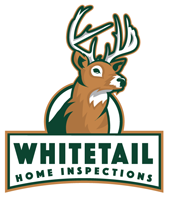Now that winter (well at least it feels like winter in November) is upon us, there are 10 simple things you can do around your home to prepare it for the cold weather.
- Insulation: New Iowa homes now require R49 as a reference to how much insulation you may need in the attic. It takes 16 inches of fiberglass insulation to obtain R49 or 14 inches of blown-in cellulose. Measure your average depth of insulation as a reference to what is now required for new homes. R-value is a measurement of thermal resistance and measures the ability of heat to transfer from one side of an object to another. Manufacturers nowadays discourage adding insulation and most state that it will void their warranty if you do.
- Fireplace: Make sure the damper closes as tightly as possible when a fire is not burning to minimize heat loss. Have your fireplace or solid fuel stove inspected annually to prevent chimney fires.
- Seal up your home: Seal draft prone areas by caulking, sealing and weather-stripping around all seams, cracks and openings. Pay special attention around windows and where siding or bricks and wood trim meet. Seal areas near electrical boxes and plumbing penetrations as well.
- Ductwork: Look for cracks or air leaks in ductwork and use HVAC tape to seal them.
- Furnace filters: Change forced air heating system air filters monthly or as recommended by the furnace manufacturer. Most paper pleated air filters have a MERV rating of the overall effectiveness of the filter. A higher value MERV rating means fewer dust particles and other airborne contaminants can pass through the filter. A higher MERV rating also reduces the air flow through the furnace, which can damage your furnace and reduce its operating efficiency. Find a balance between air being filtered and optimal furnace operation by selecting a MERV rating of 7 or 8.
- Ceiling fans: To save energy during colder weather, activate the reverse setting on your ceiling fans to circulate hot air that rises to the ceiling and blow it back down.
- Leaves: Rake and remove leaves left on the lawn to discourage disease, and clean gutters to allow melting snow and ice to adequately drain.
- Outdoor power equipment: Perform annual maintenance before storing mowers and other equipment, and either drain your fuel tanks or add a fuel stabilizer.
- Lawn and garden equipment, patio furniture: Store to avoid damage from harsh winter elements.
- Hoses, outdoor faucets and sprinkler systems: Drain before season’s first freeze and always disconnect the hose from the faucet.

Recent Comments